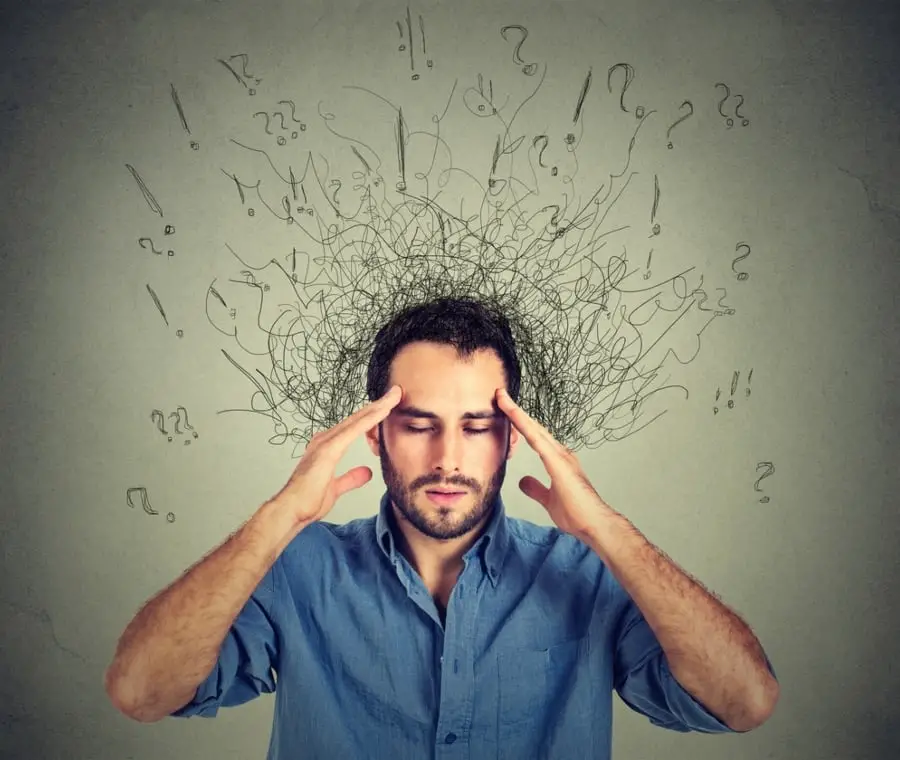The ability to adapt beliefs about one’s actions and their consequences in a constantly changing environment is a hallmark of advanced cognition. Disruptions to this ability, however, can negatively affect cognition and behavior, leading to mental states such as paranoia or the belief that others mean us harm.
How paranoia develops
In a new study, Yale scientists discover how a specific region of the brain might causally trigger these feelings of paranoia.
Their new approach, which involved aligning data collected by apes with human data, also offers a new cross-species framework through which scientists could better understand human cognition by studying other species.
Their findings and the approach used are described in the journal Cell Reports.
Although previous studies have implicated some regions of the brain in paranoia, understanding of the neural basis of paranoia remains limited.
For the new study, Yale researchers analyzed existing data from previous studies, conducted by multiple laboratories, in both humans and monkeys.
In all previous studies, humans and monkeys performed the same task, which shows how volatile (unstable) a participant finds their environment to be. Participants in each study were given three options on a screen, associated with different probabilities of receiving a reward.

If participants selected the option with the highest reward probability, they would get a reward with fewer clicks across trials. The option with the lowest probability required more clicks to receive a reward. The third option, meanwhile, was somewhere in the middle. Participants had no information about reward probability and had to discover their best option by trial and error.
After a set number of trials and without warning, the highest and lowest reward probability options reverse.
“So participants have to figure out what the best goal is, and when there is a perceived change in the environment, the participant then has to find the new best goal,” said Steve Chang, associate professor of psychology and neuroscience at the Faculty of Letters from Yale. and Science and co-senior author of the study.
Participants’ clicking behavior before and after launch could reveal information about how unstable they see their environment and how adaptive their behavior is within that changing environment.
“Not only did we use data in which monkeys and humans performed the same task, but we also applied the same computational analysis to both datasets,” said Philip Corlett, associate professor of psychiatry at Yale School of Medicine and co- senior author of the study.
“The computational model is essentially a series of equations that we can use to try to explain behavior, and here it serves as a common language between human and monkey data and allows us to compare the two and see how the monkey data relates to human data.”
In previous studies, some monkeys had small but specific lesions in one of two brain regions of interest: the orbitofrontal cortex, which has been associated with reward-related decision-making, or the mediodorsal thalamus, which sends environmental information to the brain. decision-making control centers of the brain. Among the human participants, some reported a high degree of paranoia and others did not.

The researchers found that the presence of lesions in both brain regions negatively affected the monkeys’ behavior, but in different ways.
Monkeys with lesions in the orbitofrontal cortex were more often left with the same options even after not receiving a reward. Those with lesions in the mediodorsal thalamus, however, showed erratic switching behavior, even after receiving a reward. They appeared to perceive their environment as particularly volatile, which was similar to what researchers observed in human participants with high paranoia.
The findings offer new insights into what happens in the human brain – and the role the mediodorsal thalamus might play – when people experience paranoia, the researchers say. And they provide a path for how to study complex human behaviors in the simplest animals.
“It allows us to ask how we can translate what we learn in simpler species — like rats, mice, maybe even invertebrates — to understand human cognition,” said Corlett, who, along with Chang, is a member of Yale’s Wu Tsai Institute , which aims to accelerate the understanding of human cognition.
This approach will also allow researchers to evaluate how pharmaceutical treatments that affect states such as paranoia actually work in the brain.
“And maybe in the future we can use it to find new ways to reduce paranoia in humans,” Chang said.
Unexpected uncertainty can generate paranoia
In times of unexpected uncertainty, such as the sudden onset of a global pandemic, people may be more prone to paranoia, researchers at Yale University suggest in a study published in the journal eLife.
“When our world changes unexpectedly, we want to blame this volatility on someone, to make sense of it and perhaps neutralize it,” said Yale’s Philip Corlett, associate professor of psychiatry and senior author of the study. “Historically in times of upheaval, such as the Great Fire of Ancient Rome in 64 AD or the terrorist attacks of September 11, paranoia and conspiratorial thinking increased.”
Paranoia is a key symptom of a serious mental illness, characterized by the belief that other people have malicious intentions. But it also manifests itself to varying degrees in the general population. For example, a previous survey found that 20% of the population believed people were against them at some point in the past year; 8% believe that others are actively intent on harming them.

The prevailing theory is that paranoia results from an inability to accurately assess social threats. But Corlett and lead author Erin Reed of Yale hypothesized that paranoia is instead rooted in a more basic learning mechanism that is triggered by uncertainty, even in the absence of social threat.
“We think of the brain as a prediction machine; unexpected change, whether social or otherwise, can pose a type of threat: It limits the brain’s ability to make predictions,” Reed said. “Paranoia can be a response to uncertainty in general, and social interactions can be particularly complex and difficult to predict.”
In a series of experiments, they asked subjects with varying degrees of paranoia to play a card game in which the best choices for success were secretly changed. People with little or no paranoia were slow to believe that the best choice had changed. However, those paranoid expected even more volatility in the game. They changed their choices capriciously, even after a victory. The researchers then increased the levels of uncertainty by changing the odds of winning halfway through the game without telling the participants.
This sudden change also caused participants with low paranoia to behave like those with paranoia, learning less from the consequences of their choices.
In a related experiment, Yale collaborators Jane Taylor and Stephanie Groman trained rats, a relatively asocial species, to complete a similar task in which the best successful choices changed. Rats given methamphetamine, known to induce paranoia in humans, behaved just like paranoid humans. They too expected high volatility and relied more on their own expectations than on learning from the task.

Reed, Corlett and their team then used a mathematical model to compare the choices made by rats and humans while performing similar tasks. The results of rats given methamphetamine resembled those of humans with paranoia, the researchers found.
“Our hope is that this work can facilitate a mechanistic explanation of paranoia, a first step in developing new treatments that target these underlying mechanisms,” Corlett said.
“The advantage of viewing paranoia through a nonsocial lens is that we can study these mechanisms in simpler systems, without needing to recapitulate the richness of human social interaction,” Reed concluded.
#Paranoia #brain #regions #involved